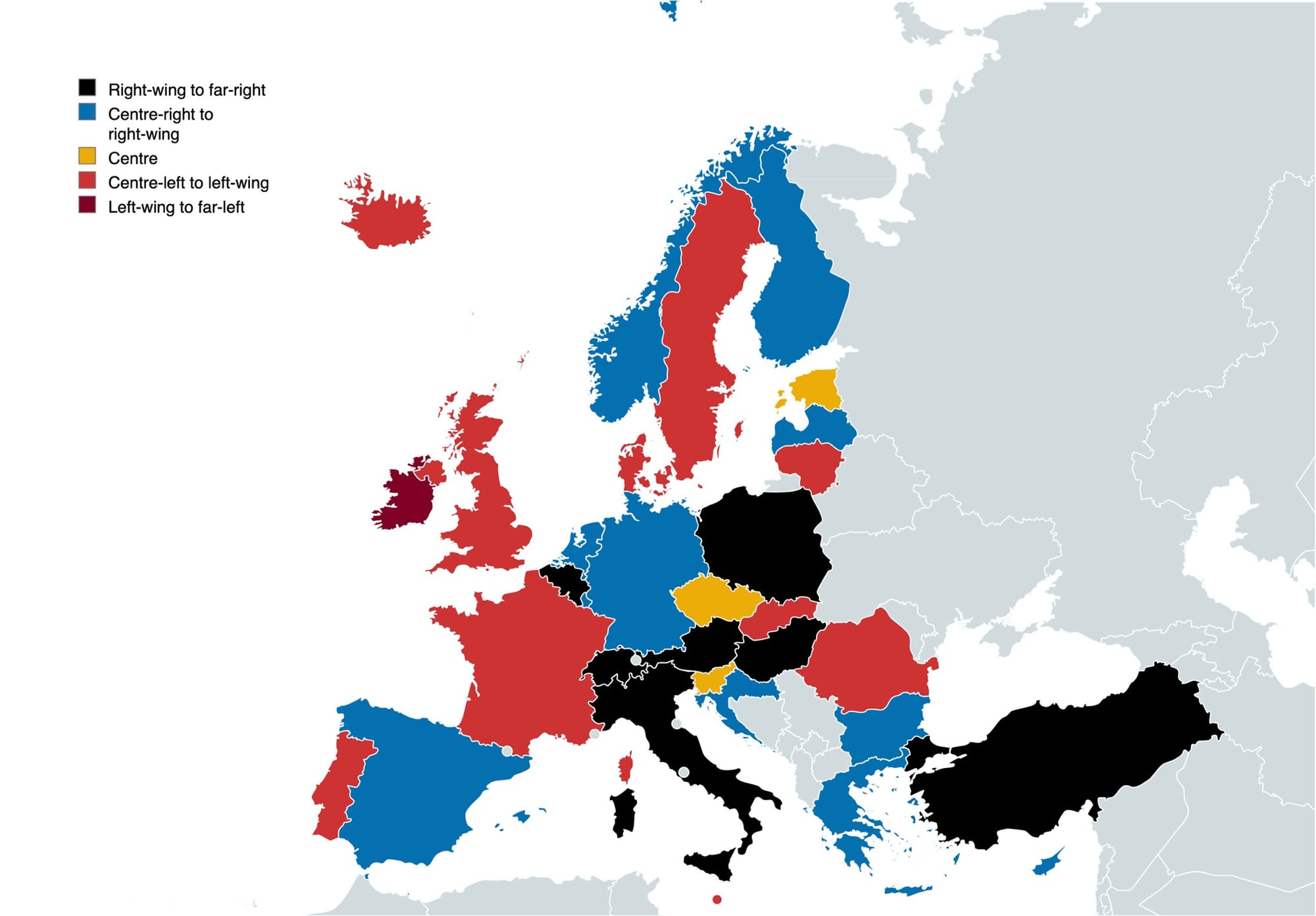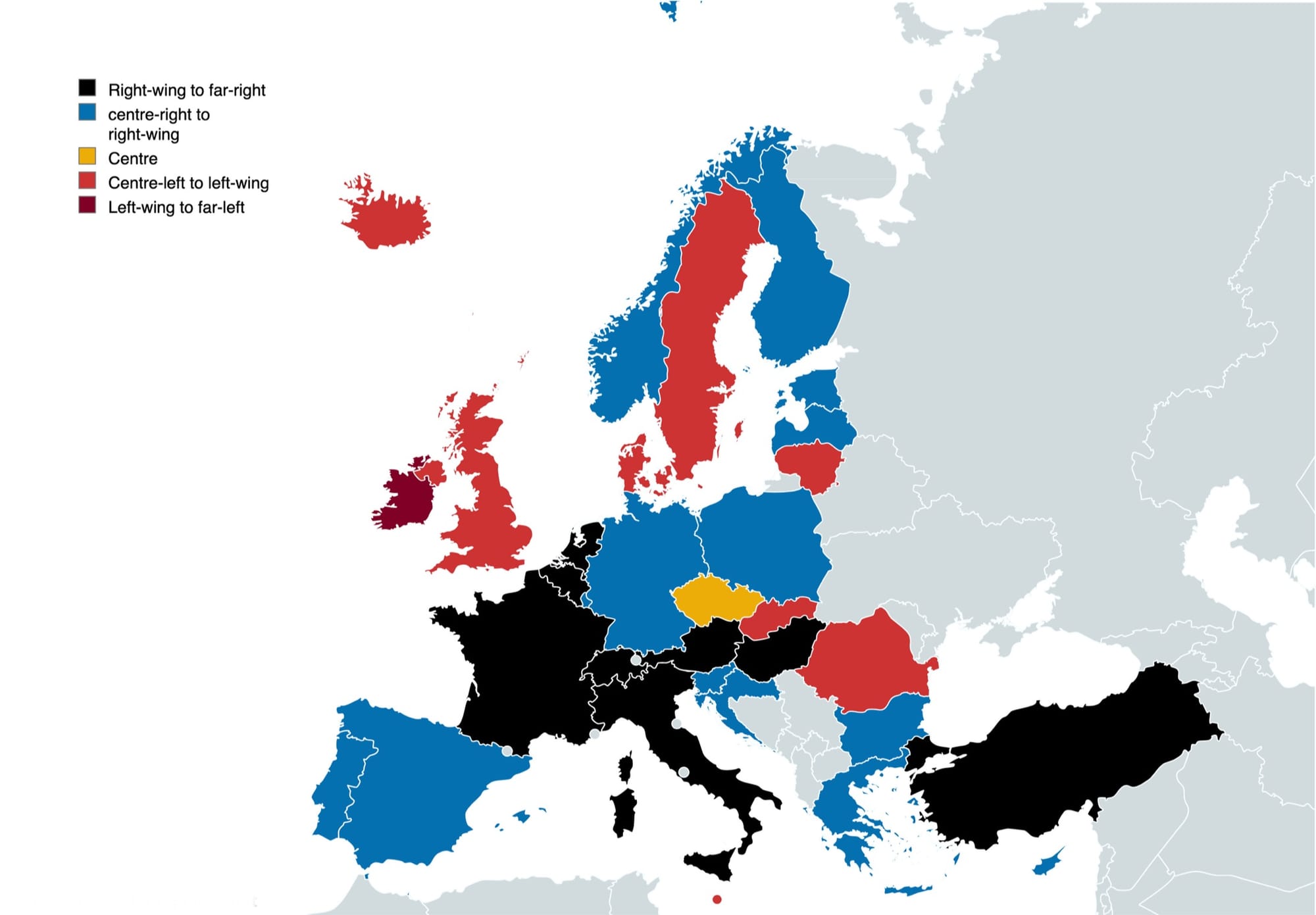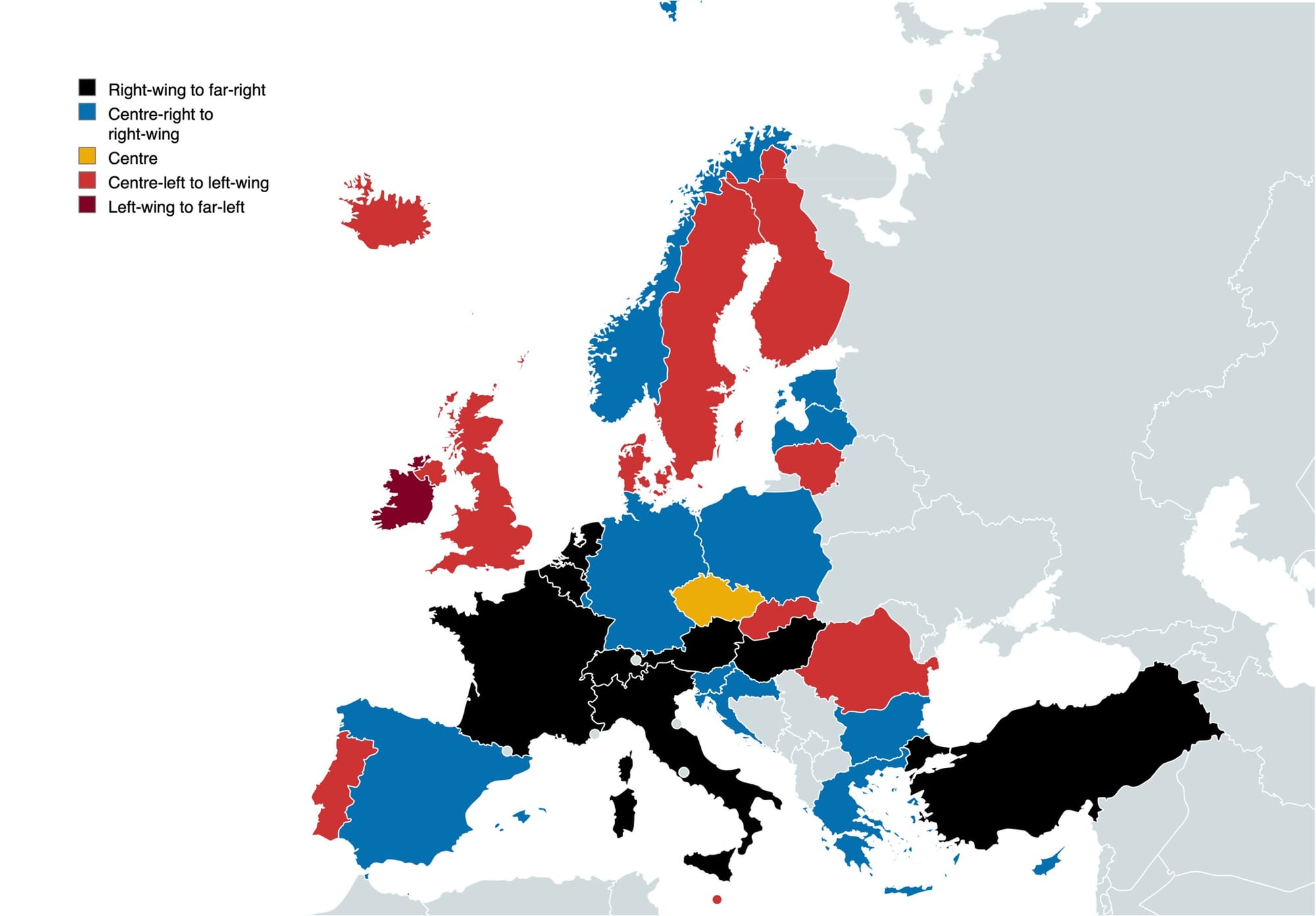Numbers Don't Lie: Leftist Rebound

Europe is changing, new world dynamics has left the continent behind in several vital aspects for the future. Wages are low, when compared with the United States, which is contributing to a brain-drain. European start-ups have a tuff time competing on the international stage as they struggle to find the talent readily available in places like Silicon Valley. Furthermore, heavy regulations often mean tech companies find it harder to operate in the EU. At the same time the East is becoming more prevalent, China continues to establish itself on the globe, through for example TikTok, and India has an ever growing influence. Migration, energy and food security alongside issues such as climate change are more challenges facing Europe. The continent simply finds itself in a new age in which its long standing ally, America, has other priorities. In such circumstances it is worth reviewing public sentiment and if politics is realigning to see a broader picture of how Europeans see the needs of the future.
As a benchmark, the largest parties within each respective nation are shown; the largest political party can say a lot about the state of a country, what is prioritised, and what is not. However, it does not say what governing coalition might take place after a supposed election. The map below showcases the largest political party in most European countries just one year ago. Ideologies are classified through EU party affiliation or what the consensus agrees upon.

The map showcases some changing aspects in Europe. The leftist coalition in France temporarily took the lead and the BBB in the Netherlands overtook the VVD. Both stagnated and started a descent, the BBB more than NUPES in France. The relatively new Slovenian Freedom Movement Party managed to keep its substantial lead over the SDS, however, polling started closening. In Portugal first place was highly contested between PS and PDS, with the former edging the win. Kaja Kallas in Estonia managed to maintain her party's status, though, the electorate was starting to shift. Furthermore, the ruling National Coalition Party in Finland remained the largest 1 year after the general election. Whilst the Swedish counterpart, the Moderates, struggled to gain traction. Both Norway's and Denmark's largest parties continued to lose votes at this time. Otherwise most countries held firm, the United Kingdom sticked with Labour, Hungry with Fidesz, Germany with the CDU and Poland with PiS. The centre-right to right-wing totalled 11 nations, meaning the categorisation was the largest in 11 states. Centre-left to left-wing held 10 and the right-wing to far-right 7. The centre maintained 3 and Sinn Féin in Ireland continued being the biggest.

This is last months map, different from the first. Namely Poland, the Netherlands, Portugal, Estonia and Slovenia all jumped ship. The right as a whole making significant gains. The Portuguese election pact, the AD, managed to sneak first place with a small margin whilst Civic Coalition in Poland, under the leadership of Donald Tusk, strengthened its margins. Otherwise the RN and PVV in France respective the Netherlands took hold, with the latter making huge gains. Isamaa in Estonia stayed roughly the same. Many countries were politically stable, with no major changes. In total 14 (+3) nations are blue, 8 red, 8 black and 1 for the other categories.

As to be expected this months map is not significantly different from the last. However, the centre-left to left-wing has made strides, both Portugal and Finland have changed in the left's favour. Meaning that in the short-term, at least, the categorisation has secured its place as 2nd largest in Europe. Last month the right-wing to far-right was the same size. On the other hand both nations defect from the centre-right to right-wing, bitting into the substantial lead, nation wise, that the category had. 12 (-2) blue, 10 (+2) red, 8 (-) black, and the others remain the same.
The inability of the centre to combat its decline is prevalent, its last stronghold, the Czech Republic, ANO remains strong. However, the disappearance of Estonia and Slovenia severely weakens the centre's ability to further its European strategy. Slovakia interestingly has a strong centre and the category's future there may be vital. Ireland continues to be the only left-wing to far-left nation ever, however, is starting to shift in recent polling. As stated last month the right continues to be the strongest force in Europe, however, the right is being increasingly put to the test. Fidesz is falling, the National Coalition Party of Finland has dropped to 2nd place and long standing Høyer and HDZ of both Norway and Croatia are fighting against major challengers. The future of Europe is uncertain and this months swift trends from last proves that.



